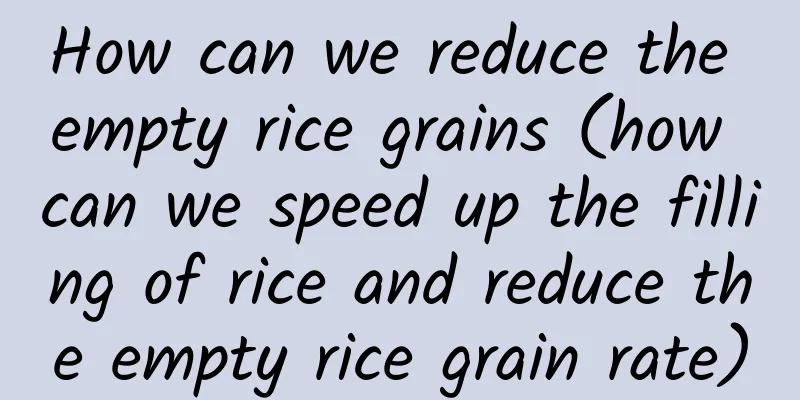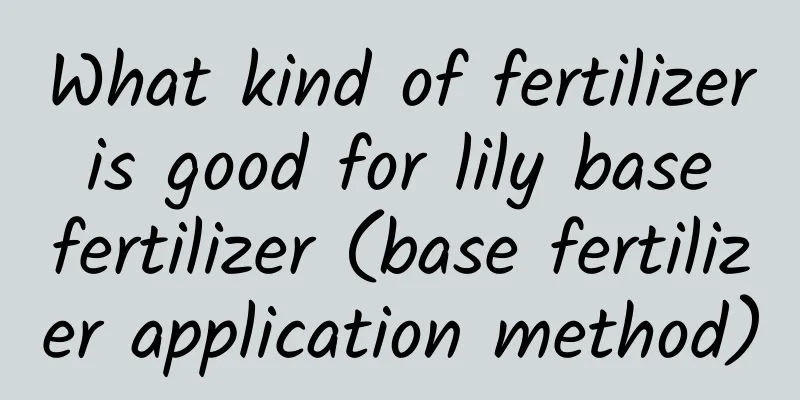How can we reduce the empty rice grains (how can we speed up the filling of rice and reduce the empty rice grain rate)

How to make rice full and reduce empty shell rate when planting rice in rural areasEmpty husk rice refers to rice grains that are not fully filled with pulp. Under normal climate and cultivation conditions, the empty husk rate of rice is about 10%. If it is not properly controlled, the empty shell rate can be as high as 30% or more, which will seriously affect the rice harvest. So, how can we make the rice full of pulp and reduce the empty shell rate? As we all know, if the empty shell rate of rice is reduced, the rice harvest will be much better. The following are the ways to reduce the empty shell rate 1. Enhance rice's ability to resist high and low temperaturesWe can use water to adjust the temperature and irrigate the field deeply to reduce the temperature of the panicle layer. In addition, scientific fertilization can enhance the vitality of rice plants and ensure a balanced supply of nutrients, thereby reducing the empty shell rate. So how to apply fertilizer scientifically? 1. Apply enough organic fertilizer Organic fertilizers can improve soil aeration and fertilizer and water retention properties, promoting the healthy growth of rice plants. 2. Control the application of nitrogen fertilizer Excessive or delayed use of nitrogen fertilizer in rice fertilizer will cause rice to fail to head or head late. Excessive or delayed use of nitrogen fertilizer in ear fertilizer will cause rice to head late and be too green. Weed 15 days after planting and apply about 4 kg of urea per mu. In the middle period, only apply balanced fertilizer to the three types of seedlings with poor growth. In the later period, apply 3 kg of granular fertilizer depending on the seedlings. When applying ear fertilizer, in addition to applying nitrogen and potassium fertilizers to the soil, you also need to spray potassium dihydrogen phosphate fertilizer on the leaves. 2. Water management for rice1. Maintain a water layer of about 2 cm in the field during the heading and flowering period of rice. 2. After the rice heads and flowers, keep the watering depth at about 1 cm each time. Wait for the water in the rice field to dry up naturally for about 2 days before watering again. 3. When drought occurs during the milky stage of filling, it is best to carry out sprinkler irrigation. 4. After the yellow maturity stage, avoid having water layers in the fields. 3. Reasonably reduce the number of seedlings transplantedIt is beneficial to increase the filling degree of rice and reduce the empty shell rate. 【 Summarize 】 There are many reasons for the formation of empty rice husks, such as variety, temperature, water, light, nutrients, pests and diseases, etc. As long as the above measures are taken, the empty rice husks will be greatly reduced, thus achieving a good harvest. |
<<: What fertilizer can make garlic grow big and high yield (the best fertilizer for growing garlic)
>>: When is the best time to plant pumpkins? (Best time and method to sow pumpkins)
Recommend
What to do if the leaves of Desert Rose turn yellow
1. Change the breeding environment: Reason: Deser...
Advantages and Disadvantages of Lotus Gem Rose
The Lotus Gem Rose is also known as the Maple Lea...
How to promote the flowering of the plant and what to do after flowering
1. How to promote flowering 1. Suitable light: Th...
Hibiscus Varieties
Introduction to Fuso Hibiscus, also known as red ...
What to do if the Phalaenopsis flower stem is broken
1. Solution Don't worry too much if the flowe...
The Feng Shui Effect of Fragrant Wood
1. About the saying that it will cause financial ...
How to care for Daphne koreana in winter
Winter care methods for Daphne koreana Placement ...
Golden Orchid Breeding Methods and Precautions
Golden orchid is still very easy to keep alive. I...
Can roses survive by cuttings? (Does the survival rate of rose cuttings have a high survival rate?)
Can roses be propagated by cuttings? Roses can be...
Why do the leaves of velvet arrowroot turn yellow?
Temperature causes velvet arrowroot leaves to tur...
These 6 kinds of flowers can turn into carpets with a little light, and they become more beautiful the more they are exposed to the sun!
Long-flowering period of Vinca rosea Catharanthus...
Can growing pitcher plants at home effectively catch mosquitoes?
Catching insects: a last resort Its unique appear...
How to treat diseases and pests of thorny roses
Diseases The first disease is called "black ...
The difference between organic fertilizer and inorganic fertilizer
Organic Fertilizer Organic fertilizer, also known...
Three common misunderstandings about flower cultivation
Misconception 1: Water more. Giving flowers more ...









